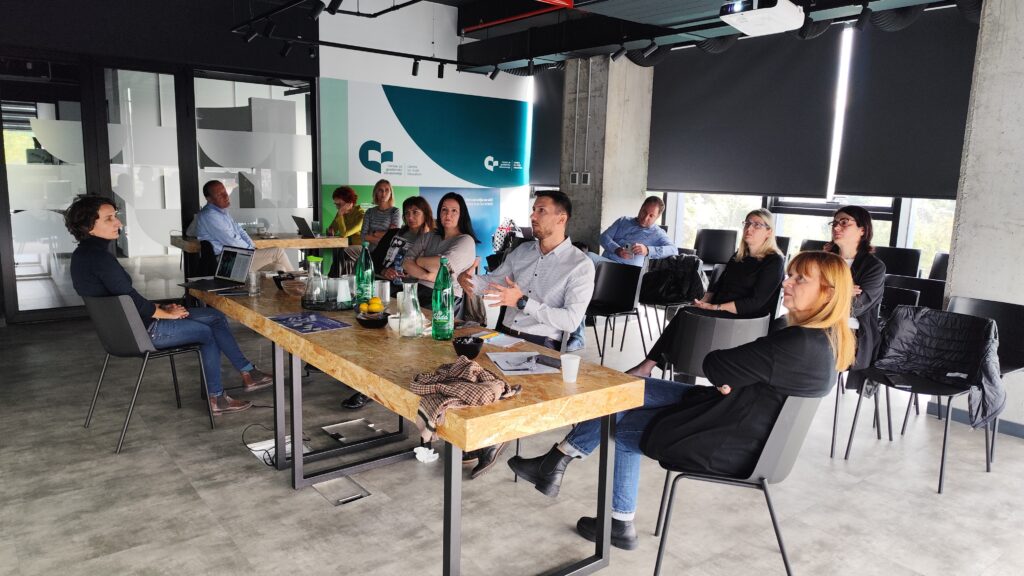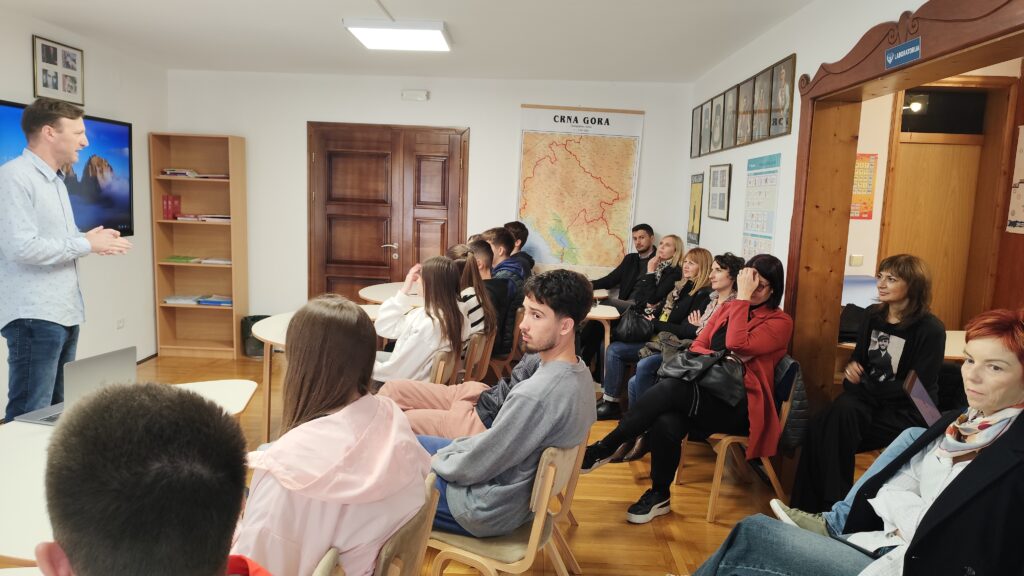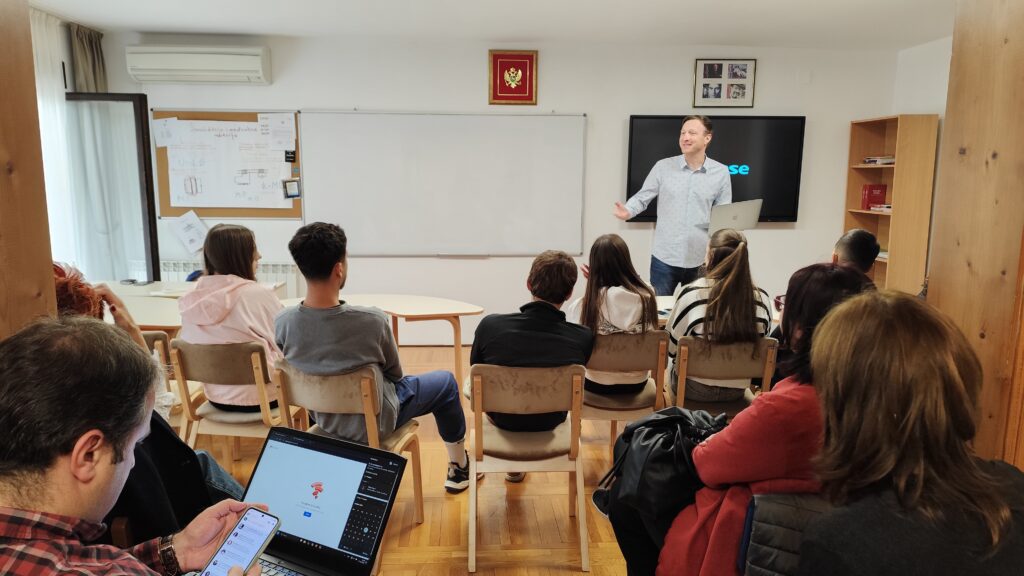Through interactive methods, learning outside the classroom, and the use of digital tools, teachers gain new opportunities to explore sensitive and complex topics, bringing history closer to young people in a dynamic and relevant way. Such approaches enable multiple perspectives in understanding the past, as assessed at the two-day educational workshop “Museum of the 1990s – A New Approach to Learning”, organised by the Centre for Civic Education (CCE) in Podgorica and Cetinje on 17 and 18 October 2025, gathering twelve history teachers from Montenegro and Serbia.

As part of the programme, history teacher Igor Radulović from the “Podgorica” Gymnasium held a class on “War Crimes of the 1990s in the Verdicts of Montenegrin Courts” with a group of around fifteen students. The class served as an example of how history teaching can be used to foster critical thinking and understanding of accountability in the context of dealing with the past.
The participants also visited the exhibition “The 1990s: From Non-Compliance to Resistance”, in Cetinje and attended the panel discussion of the same name held there yesterday.
On the second day, historian Sanja Radović delivered a lecture on innovative teaching methods in history, highlighting the importance of regional cooperation. The programme concluded with a session on educational challenges and the role of the Museum of the 1990s in the process of dealing with the past. “I was glad to have the opportunity to present to history teachers from Serbia and Montenegro methodologies and digital tools for teaching about the 1990s. Together, we explored how new technologies and shared historical resources can enhance teaching and connect students with contemporary approaches to history,” said Radović.

Participants evaluated the workshop as both useful and inspiring for improving history teaching.
“The topics related to the 1990s are still sensitive in history education,” said Vesna Kostić, history teacher at “Jovan Dučić” Elementary School in Belgrade. “Everyone who lived through that period has their own view, often shaped by personal experience, which is reflected in students and can be difficult to change. That is why it is invaluable to teach through new methods that enable students to develop their own analytical view of the past. Learning outside the classroom further motivates them and opens space for deeper reflection,” Kostić explained.
Zorana Matićević, history teacher at Third Belgrade Gymnasium, assessed that the concept of the Labyrinth of the 1990s exhibition is challenging on multiple levels. “The 1990s were a period of great upheaval, surrounded by numerous myths and conflicting interpretations. At the same time, it is a living wound where personal and collective histories intertwine. A particular challenge is the issue of historical distance – is thirty years enough to understand that period?” she noted, adding that the exhibition’s concept implies an active role for visitors, “which further engages young people and provides teachers with new tools to place students at the centre of the learning process.”

Nikola Vukićević, history teacher at “Vuko Jovović” Elementary School in Danilovgrad, described the workshop as extremely valuable and inspiring. “The class held by colleague Radulović had a very lively atmosphere, with students actively participating in the discussion. I was particularly impressed by the visit to Cetinje and the exhibition ‘The 1990s: From Non-Compliance to Resistance’, which provided insight into the anti-war spirit of that time. All of this, including the panel discussion, gave me new ideas on how to present this topic to my ninth-grade students,” said Vukićević.
Ivana Kurtović, teacher at “Mirko Srzentić” Elementary School in Petrovac, emphasized the importance of discussions with students and colleagues about past events, not just for remembering facts, but for understanding context and responsibility.“That is how students develop critical thinking and learn to understand the world through dialogue. The return of civic education to schools would be an important step toward an education that encourages dialogue, empathy, and responsibility,” Kurtović stated.
The workshop was part of the project “Museum of the 1990s – A Regional Centre for Reconciliation, Education and Future Cooperation”, implemented by the CCE from Montenegro and Cultural Front from Serbia, with the support of the Ministry of Foreign Affairs of the Kingdom of the Netherlands through the MATRA programme, as well as the Shared Horizons project,funded by the Republic of France and implemented by Expertise France – AFD.
